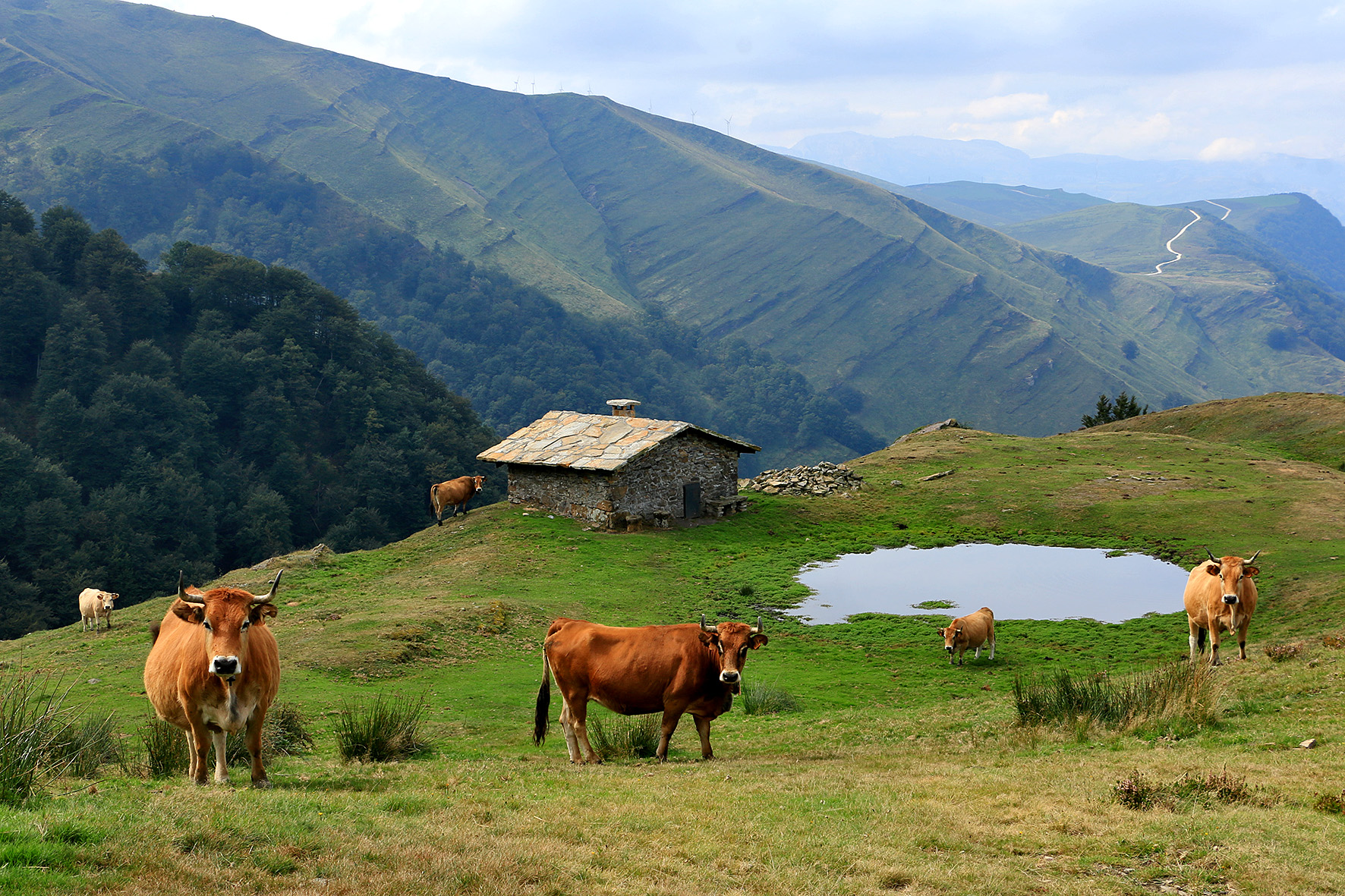Archives

Luis Maria Artabe Zearreta feeding the livestock. Aldanagoikoa Farmstead in Amorebieta-Etxano (Bizkaia), 1985. Manuel Ignacio Zubia Artabe.
The internal distribution of spaces in rural houses varied to more adequately meet the needs of households and their way of living. So there where livestock farming was the major activity the whole or most of the ground floor would be originally used for stabling. Should the hearth be on that same floor, hatches in the wall were fairly common for feeding the cows straight from the kitchen or the passageway. Being so very close, domestic animals actually provided a natural means of heating agricultural dwellings. (more…)

Slopes of Eneabe. Ubide (Bizkaia), December 1996. José Ignacio García Muñoz. Labayru Fundazioa Photographic Archive.
Spring-summer transhumance and transterminance, both implying movement of flocks to high pastures, were defined and dealt with in a previous post published on 17 May 2019.
With winter approaching, herds are brought down from the highlands, since adverse weather hamper the stay. And as the vegetative growth of grass stops or slows down due to cold winter temperatures, and there is not enough pasture in the lower valleys, herds are moved towards coastal areas, where milder temperatures prevail, or to warmer innermost regions of the country, such as the Royal Bardenas, frequented by most Pyrenean flocks, or even as far as Ebro Valley. (more…)

Climb to the mountain. Aia (Gipuzkoa), 1998. Antxon Aguirre.
Transhumance is the practice of moving livestock, mainly sheep, from one grazing ground to another in a seasonal cycle, typically to highlands in summer and lowlands in winter. And for good reason, because pasture and forage resources in certain geographical areas do not always match livestock needs throughout the year. Long-distance livestock routes are commonly known as cañadas, or altxonbideak in Lower Navarre and Zuberoa, whereas ardibideak, or simply bideak, are minor paths and tracks used to access the mountain from lower altitudes. (more…)

Rebuilt dwelling for herders in Gumadernia. Carranza (Bizkaia), 2018. Miguel Sabino Díaz.
Since ancient times shepherds from the valley who grazed their flocks on hillocks and heights of the Ordunte Mountains belonging to the municipality of Carranza (Bizkaia) have used caves and rocky outcrops in the range, along with improvised shanty constructions for temporary shelter from inclement weather and protection against the presence of wolves and the grave danger they posed to the sheep. (more…)


